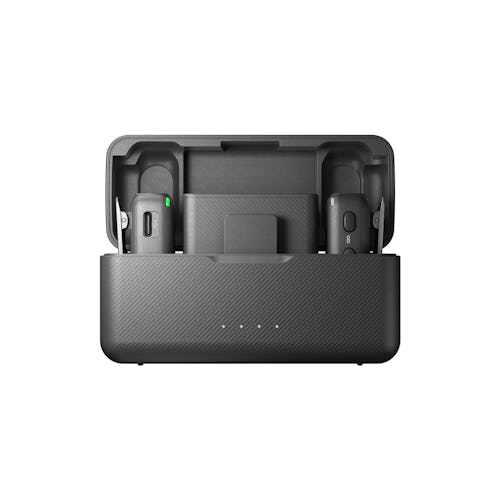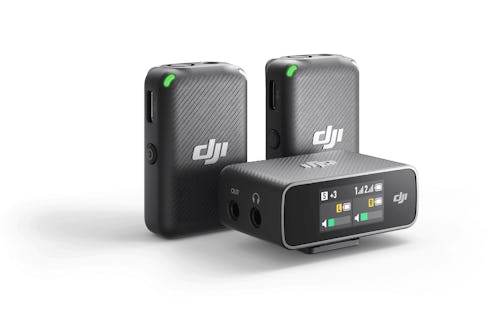
After conquering the drone market, DJI is entering the audio arena. The Chinese drone maker has been expanding its product lineup recently, even offering action cameras and smartphone gimbals alongside its popular drones. While all those are mostly related to recording video, DJI is finally offering an audio product with the Mic.
The design of the microphones themselves is pretty straightforward, but they can be easily stowed away in a charging case design that’s reminiscent of AirPods. The two transmitters and receiver slots right into the handy case that also gives them an extra few hours of power.

Judging from the design of the mics, it seems like DJI is trying to target the pro-sumer demographic, like content creators or vloggers who just want a simple way to get good audio.
Smart design —
Since there’s two transmitters with their own built-in omnidirectional mics, the DJI Mic allows for dual-channel recording. You can clip the mics on or attach them via magnets, and DJI says you can use the mics up to 250 meters away, or about 820 feet. But they do operate on the 2.4Hz frequency band, which means they’ll probably struggle when you go more than 200 feet away and have to deal with interference from other Wi-Fi devices. The DJI Mic looks more suited for interviews, small studio recordings or just general vlogging that don’t ever go past 20 feet.

Like how wireless earbuds measure battery life, DJI says the transmitters themselves have 5.5 hours of battery life and the receiver has five hours, but you can get up to 15 hours when using the charging case. The transmitters also have 8GB of internal storage, meaning around 14 hours of onboard memory, but they do not support external storage.
DJI built the Mic’s receiver with USB-C, Lightning and 3.5mm TRS ports so you can pair it with most devices, including cameras, smartphones, computers, and obviously DJI’s products like the Action 2 or the OM 5.
Similar pricing —
At $329, DJI priced its Mic to compete against Rode’s Wireless GO II and Sennheiser’s XSW-D lavalier sets. The main difference between these competing wireless mics is DJI’s sleekly-designed charging case that many of us should be familiar with with the advent of wireless earbuds.
Even though the user-friendly design is a major selling point for the DJI Mic, it’s still going to have to prove itself in terms of offering crystal clear audio quality. After all, nobody ever sticks around to watch a video with bad audio.







